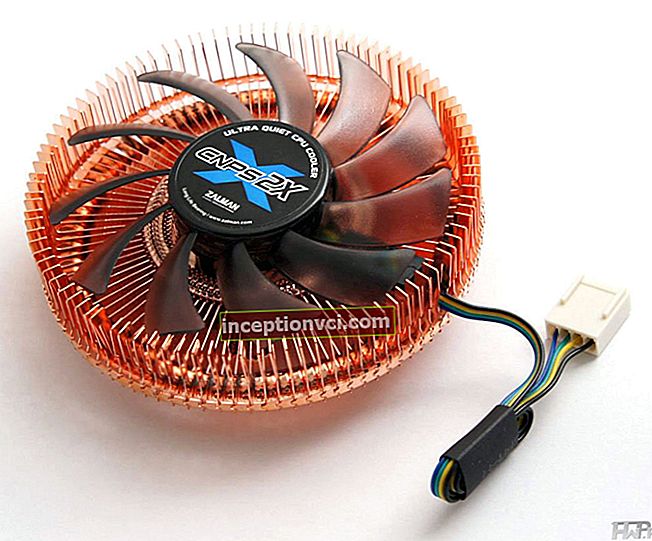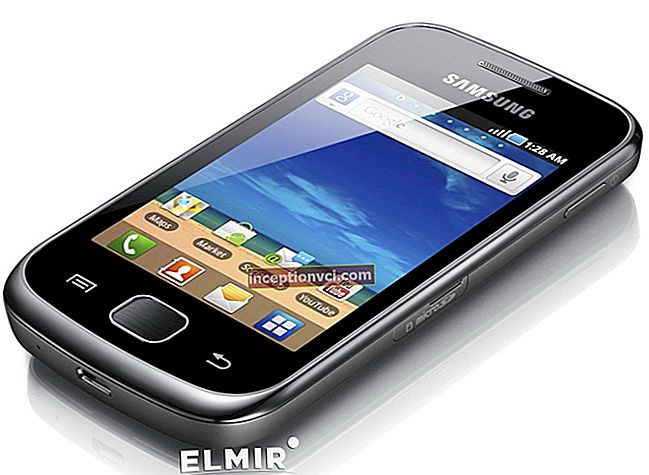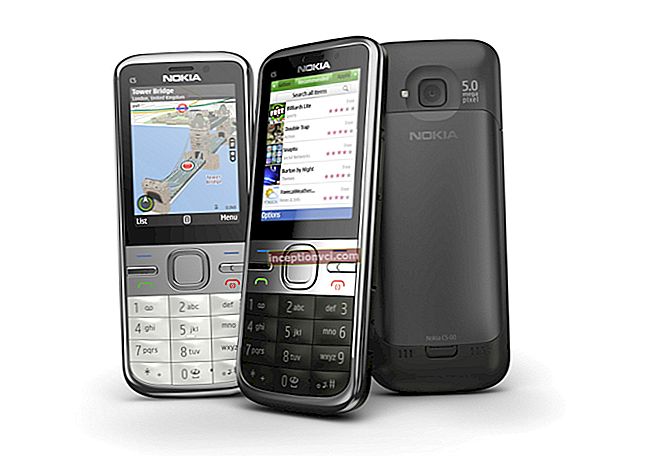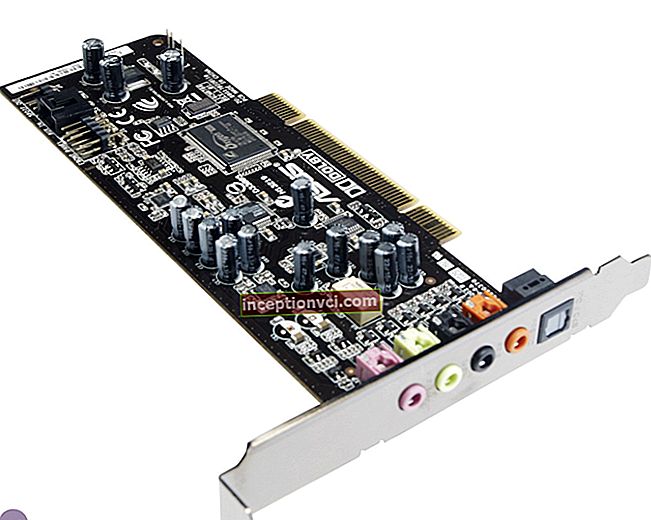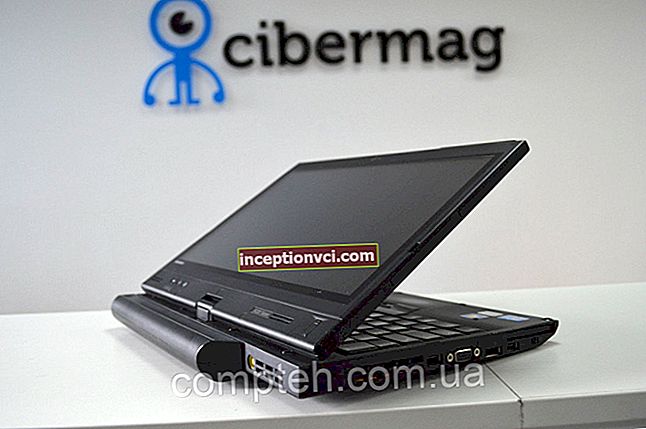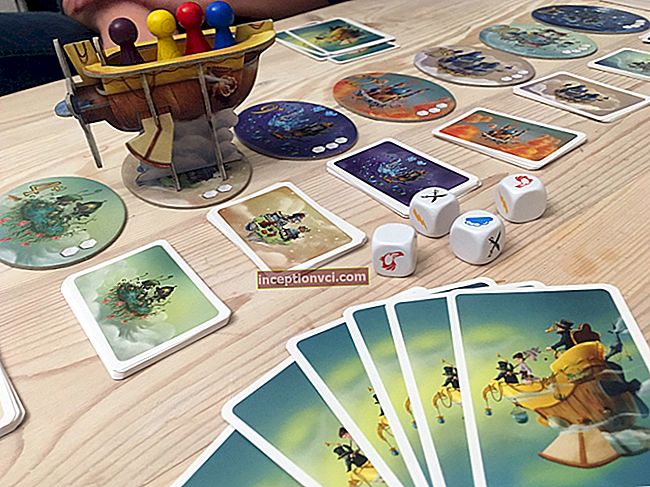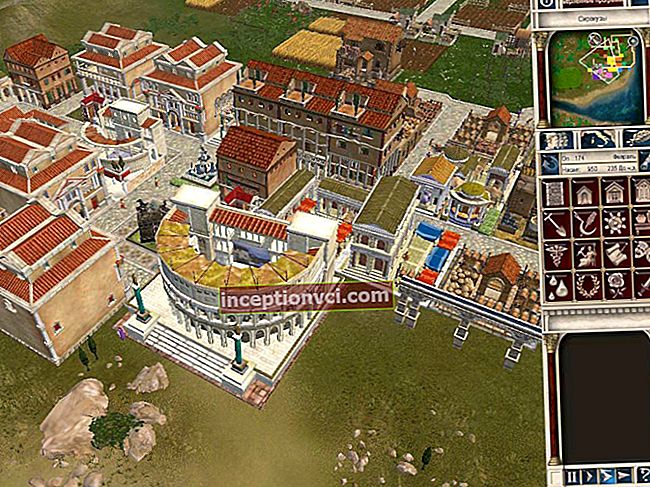Test-review of the protected phone Lenovo A660
Recently, almost all major mobile phone manufacturers have presented their products with additional protection against dust and moisture. And if the appearance of similar products from Samsung (І9295 Galaxy S4 Active, S5690 Galaxy Xcover) or Sony (Xperia V, Xperia Go, Xperia ZR) is rather difficult to surprise anyone, then the rugged phone from Caterpillar (CAT B15) made a real sensation ... Especially considering that it was released by a company that has absolutely nothing to do with the mobile device market.
However, the mentioned models have a rather high price, and the hero of this review bribes potential buyers with its affordable cost.

So, Lenovo A660. This is a fairly simple hardware-protected smartphone, which is based on a hardware platform similar to the listed models. In addition, it will appeal to fans of long-distance travel due to the support of two SIM-cards.
Contents of delivery

A660 packaging is an unattractive, externally flat box made of inexpensive white cardboard with a plastic tray inside. But in terms of the richness of the package, he did not hit his face in the dirt. The package includes, in addition to the smartphone itself, a standard charger, a stereo headset, a rubber case and even a screen protector. Among other things, potential buyers will love the protective case.

Considering that the A660 does not have a very high degree of shock protection, the company's developers decided to equip the phone with such a useful additional accessory. Its thick rubberized walls will help preserve the delicate electronic stuffing of your smartphone in extreme situations. And the rough textured sides of the case will not let the device slip out even from a wet hand.
Security
Considering the low technical performance of the A660, a potential user will choose it among the whole variety of mobile devices, of course, thanks only to its high protective qualities. Therefore, the manufacturing company paid priority attention to this issue.
The А660 is officially certified according to the IP67 protection class, which implies complete protection against dust and moisture penetration inside the case, as well as the ability to stay in fresh water at a depth of one meter for thirty minutes.

With the protection against moisture penetration into the body of the smartphone, everything is in order. Since it has a removable back cover, like its counterparts, the organization of protection is made in the same style - inside there is a rubber rim-gasket that surrounds the central part of the frame. It is designed to protect metal contacts and SIM and memory card slots. It does not protect the camera window and speaker grill - they are protected in a different way.
One of the competitors of the A660, the CAT B15 smartphone, has a real lid lock, which is a latch that securely holds the back cover in case of falls or bumps. Interestingly, the creators of the A660 have reproduced a similar element on their creation. It looks so much like a real valve that you just want to open it at first. However, in the end it turns out that this is just a decorative element - in reality, the cover is simply attached to several plastic latches, like other ordinary smartphones. By the way, the developers of the Xperia ZR also did not provide a lid lock, which is very sad. When dropped, even from a small height, covers of such a design simply fly off the case, opening up free access to moisture to the inner surfaces of the device.
As for the Xperia ZR, it can take photos even underwater.It is difficult to say how necessary such a function is in fresh water. But for underwater photography of marine beauty, the device may come in handy. Although officially almost all protected smartphones cannot be immersed in salt water. Unlike the Xperia ZR, the A660 lacks a hardware camera key. Therefore, he is not able to shoot underwater. It is worth recalling that when submerged under water, no display will respond to finger touches, therefore, shooting by pressing virtual icons on the screen is, in principle, impossible - it can be done only if there is a hardware camera shutter button.
That is, it turns out that the A660 does not have any of the additional little things - neither shock protection, nor a lock on the back cover, nor the ability to shoot underwater. But it provides protection against dust and moisture at the proper level, and this is the most important indicator for devices of this class. In addition, lovers of an active lifestyle will appreciate the ability to control their smartphone even with wet fingers.
Appearance and ease of use

Regarding the appearance of the A660, it fits perfectly into the image of a protected, sporty and even a little brutal device. The smartphone has an expressive design and looks very nice, which is still a rarity for inexpensive mobile devices. Naturally, it has no glossy surfaces, only matte ones, and the back cover and sides of the phone have a textured surface. In addition, it has ribbed notches. Thanks to these design features, the A660 does not slip at all and is perfectly held in the hand in any situation.

The dimensions of the device go well with its weight. They are so well chosen that it is impossible to find fault with them. The material for the case is a high-quality-looking and hard-to-touch plastic without a rubberized effect. The A660 has no metal parts. All elements of the smartphone are perfectly matched to each other, the gaps are completely absent, and nothing creaks when compressed. In general, the build quality and the materials themselves are excellent.

There are two color options for this model - Starry Night Black and Vibrant Orange. The black model has an expressive and bright light green stripe along the perimeter of the lateral surface, which reminds of the extreme orientation of the smartphone image. In the orange model, this strip is made of black rubber. Both options are not easily soiled, so the choice of colors depends only on personal preference.
The back cover of the phone is removable and fixed, as usual, with several plastic latches. As mentioned above, it does not have any locking locks, although the A660 still belongs to the class of protected devices. By the way, the lid is quite difficult to open - it sits so tightly on the latches that trying to pry it off with your fingernail you can even get hurt.

Three slots can be seen under the cover. Two of them are designed for installing SIM cards, and the third is for a microSD memory card. All of them are located in one row, which is very convenient when installing cards. If the internal slots of the same CAT B15 are extremely inconvenient to use, then in the case of the A660, installing microSIM cards with adapters will not cause any problems.
The smartphone comes with a removable battery, which, when installed, tightly supports all three cards installed in the slots. Accordingly, there can be no question of any hot swap.
The front panel of the smartphone is partially covered by Gorilla Glass. And at the very bottom of the panel is a neat plastic ledge. But unlike most similar devices, the empty space under the screen of the A660 is not only physically reduced as much as possible, but also masked by additional elements - an inscription about the presence of moisture protection and a horizontally elongated indicator, made to match the color of the side light green strip.It shines with a poisonous yellow light and notifies about various events: from incoming calls to the results of recharging. In general, the lower part of the A660 turned out to be visually complete and very pretty, which is extremely rare.

Traditionally, for Lenovo smartphones, the buttons for controlling the system or applications in the A660 are four, and not three, like most other smartphones. The Home button is made in the form of a corporate logo - Lenovo's four-leafed leaf, which in older models is even present on the screen as a splash screen. For them, to quickly go to the corresponding application, you need to pull one of the four petals to the side. The A660 does not have such a function - the lock icon is a regular horizontal bar that slides to the side to unlock.

The rest of the control parts and connectors are traditionally located at the ends of the device. The microUSB connector and audio output (3.5 mm) are combined into one unit and covered with one protective cap. If you connect the charger and headphones at the same time, then they will sit very tightly to each other. But the presence of a single plug, and not two separate ones, is more ergonomic and more successful in terms of security. It has a dense rubber pad that protects the contacts from water ingress. When opening, the plug is held on the body by means of a short rubber clamp, which is very convenient, since such a small part is very easy to lose.

The power and lock button is located on the top. There is a kind of light indicator on it, which does not glow, but is only an element of decor. The volume control button is located on the right side of the phone and is made in the form of a two-position swing key. It practically does not protrude beyond the body, so it is quite problematic to find it by touch. Most likely, you won't be able to get used to it, so you will have to keep looking at the phone while adjusting the volume.
Display
A660 is equipped with a modest sensor TN-matrix. Its dimensions are 52x87 mm (4 inches diagonal - 102 mm), the resolution is 480x800 pixels, and the ppi is 233.
The brightness of the screen is adjustable in both manual and automatic modes. Automatic adjustment is based on the use of a light sensor.

The presence of multitouch technology allows simultaneous processing of three touches. These results were obtained after testing the smartphone with the AnTuTu Tester program. By the way, in SAT B15 this program revealed the possibility of simultaneous processing of five simultaneous touches. Also, the A660 is equipped with a proximity sensor, which is responsible for locking the screen when you bring the phone to your ear.

The screen is covered with a glass plate with a mirror-smooth surface. Judging by the barely noticeable decrease in brightness, it has a rather weak antiglare filter. The outer surface of the display does not have an oleophobic (grease-repellent) coating. The surface of the matrix itself is matte, so the screen strongly reflects both side and direct light. Considering the presence of a weak antiglare filter and a matte surface of the matrix, even at the maximum brightness of the backlight in bright daylight, the readability of information on the screen will not be good. However, the reduced brightness will allow you to comfortably use your smartphone in complete darkness.
The screen is characterized by fairly good viewing angles in the horizontal direction, but at the slightest deviation in the vertical direction, the image is strongly inverted. Turning downward produces light shades, and turning upward produces dark shades.

In general, the A660 screen, due to the presence of automatic brightness control and a relatively wide color gamut, is quite acceptable for the class of entry-level rugged smartphones. But, of course, it cannot compete with CAT B15 or Xperia ZR screens.
Sound
Usually protected phones have a specific internal arrangement, which is organized taking into account their focus - protection from moisture.Their speakers are protected by a special additional membrane that does not allow water to pass through. Considering this, the sound of such phones is quiet and dull. And the A660 is the opposite - it emits such loud and piercing sounds that they will probably be heard near the mountain waterfall. A very useful quality especially for travelers.

The protective mesh of the external speaker is located on the rear panel, but it is impossible to drown it in principle - even if you pinch the hole with your finger, the smartphone will continue to rattle with the whole body. The phone speaker is virtually distortion-free. The voice, intonation and timbre of the familiar interlocutor are well recognizable, and the sound is very loud and quite clear across the entire spectrum.

The stock audio player does not differ in any features. For sound settings, there is a standard Android equalizer with several preset settings. FM radio in a smartphone traditionally works only when headphones are connected, which are also an external antenna. Also, the standard software package of the A660 provides for the presence of a dictaphone, which, unfortunately, is not intended for recording telephone conversations from the line.
Camera
Like most modern smartphones, the A660 is equipped with two digital camera modules. The main (rear) camera is equipped with a relatively modest 5MP module. In this case, the pictures are obtained with a size of 1920x2560 mm. And the front camera has a module with a resolution of only 0.3 MP. In general, when shooting general plans, the A660 shows quite good results for budget smartphones. However, I would like the pictures to be clearer, especially macro shots.

By default, the camcorder shoots in 480x640 resolution, and video files are saved in the 3GP container. Camera control settings are standard for Android. Therefore, the not very good arrangement of the icons makes the user scour the menu. For example, the choice of shooting resolution options is carried out by pressing the small arrows to the right or left, which is very inconvenient. In general, Lenovo developers are right to make their own changes to the standard Android interface. Camera control options are standard - you can add color effects, artistic effects, and geotags, adjust saturation, contrast, brightness, white balance, and even use the HDR mode.
Shooting is activated by a virtual button on the screen, there is no separate hardware camera launch button. Also, there is no way to take photos while recording video.
Telephone part and communications

The A660 standardly supports modern 2G GSM and 3G WCDMA networks, but of course there is no support for the 5 GHz Wi-Fi band, fourth generation networks (LTE) and NFC technology. The algorithm for working with two calling cards is standard - you can only have one active conversation, only one card works in 3G mode, the second is limited to 2G mode. Although changing card modes is possible without physically replacing slots. It is carried out through the program menu.

There were no spontaneous shutdowns / reboots or freezes during the tests. The screen is locked due to the proximity sensor when you bring the smartphone to your ear. And the brightness level of the display is controlled automatically using a light sensor.
Operating system and software

The A660 system uses the Android 4.0.4 software platform and its standard proprietary interface. Lenovo did not use any additional in-house graphical user interfaces (GUIs) in this case. Also, the smartphone does not have any additional installed third-party applications. Of the useful functions, only the file manager is available. Everything else will have to be downloaded and installed via the Google Play online store.
Performance
The hardware platform of the A660 is based on the MediaTek MT6577 single-chip system (SoC).Its central processor has 2 Cortex-A9 cores, which are clocked at 1 GHz. The GPU PowerVR SGX 531 video processor assists in graphics processing. The device has only 512 MB of RAM and 4 GB of internal memory. But the user has only 1 GB of storage available to upload his own files. You can expand the memory by using a microSD card. The A660 does not support the mode of connecting external devices to the USB Host connector.

To get an idea of the performance of the A660 platform, a number of tests were carried out. The device was tested by AnTuTu Benchmark, GeekBench 2, MobileXPRT, Quadrant Standard, and the test results were compared with the results of other participants - CAT B15, Sony Xperia ZR and Sony Xperia V. According to the data obtained during the tests, the performance of the A660, as expected, turned out to be rather low. ... For its filling, this is a completely predictable result. CAT B15 showed the same low results, since its operation is based on a similar hardware platform.
Regarding the results of testing the graphics subsystem using the cross-platform 3DMark application, neither the A660 nor the CAT B15 coped with it. They could not even pass the test, constantly displaying a rejection message on the display. This is not surprising, since both smartphones do not meet the official minimum requirements for the application in terms of the amount of RAM - 3DMark works with devices with at least 1 GB of RAM. Although testing with the Epic Citadel gaming application passed without failures, it showed that the results of the A660 graphics subsystem are quite low. And in JavaScript engine speed tests, the A660 showed the worst results among all participants.
Battery life
A660 is equipped with a 1500 mAh Li-Ion battery (brand - BL194). For comparison, the CAT B15 is equipped with a 2000 mAh battery. As already mentioned, the battery of the A660 is removable, so it can be removed and replaced. Continuous reading of text files in the FBReader program at the minimum comfortable brightness level was a little over 12 hours, and with continuous viewing of YouTube videos in HQ quality, the battery lasted for 6 hours. In general, the results are quite modest, so the user will have to charge the battery quite often.
Final impressions
In general, the Lenovo A660 smartphone looks pretty good against the background of an affordable price. Yes, it is not characterized by high performance, but other rugged smartphones do not shine with it either. Sony's products, in this case, are an exception, but smartphones of this brand are much more expensive. And if you do not pursue high performance and do not purchase the A660 as a multimedia combine, then otherwise it will serve its owner with dignity.
